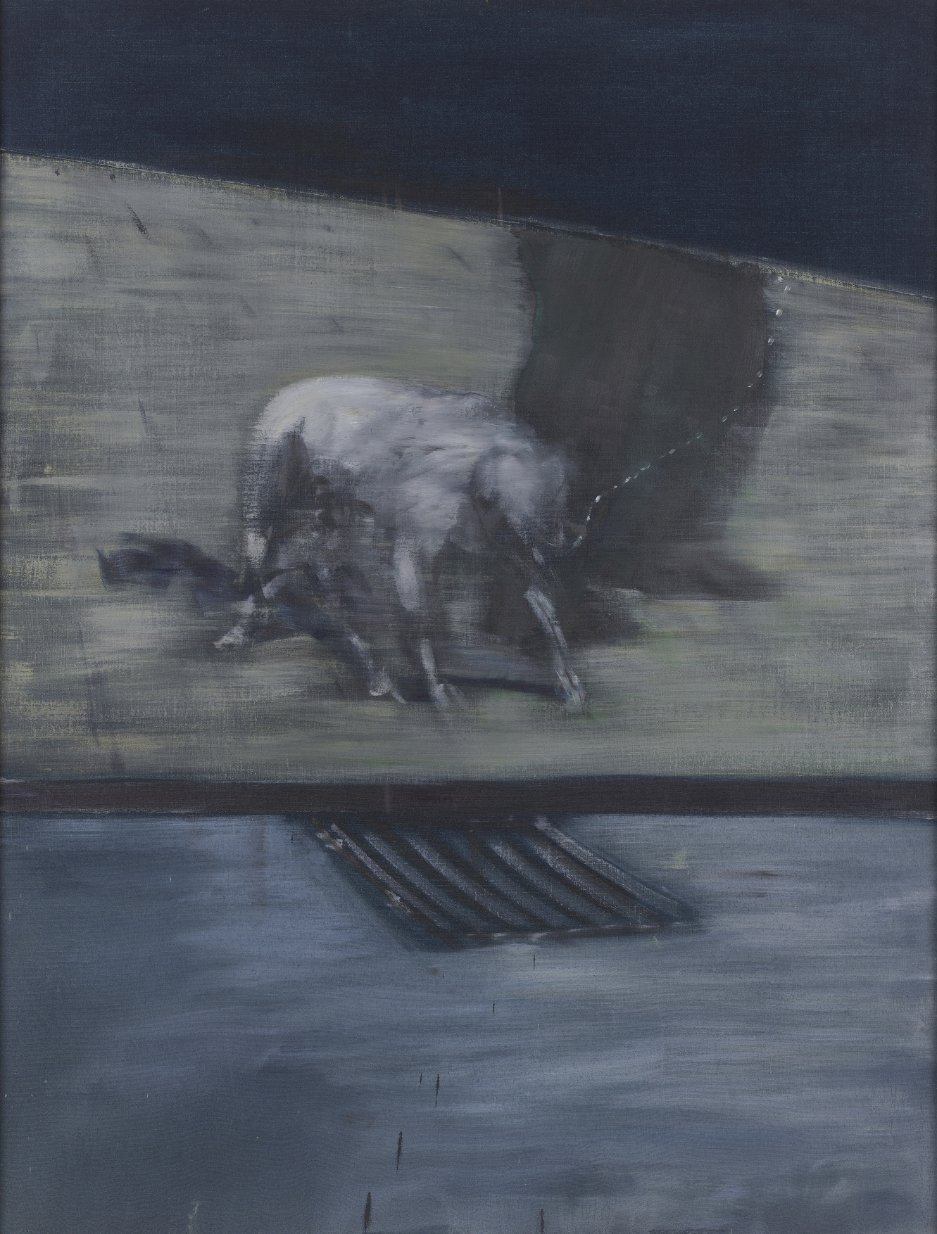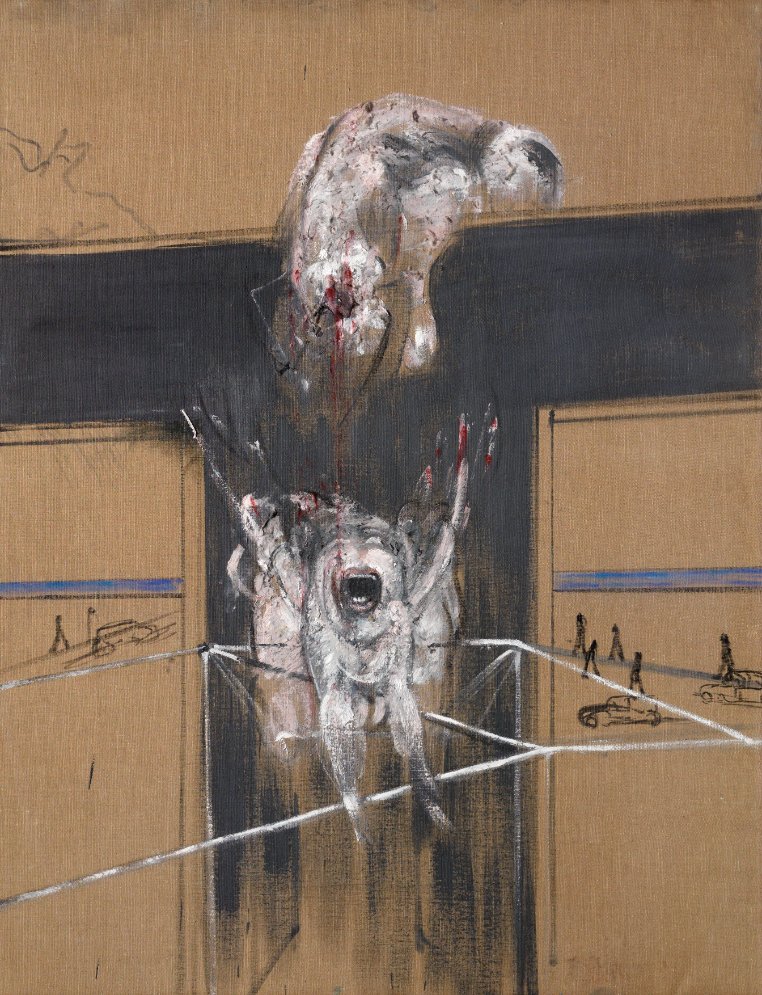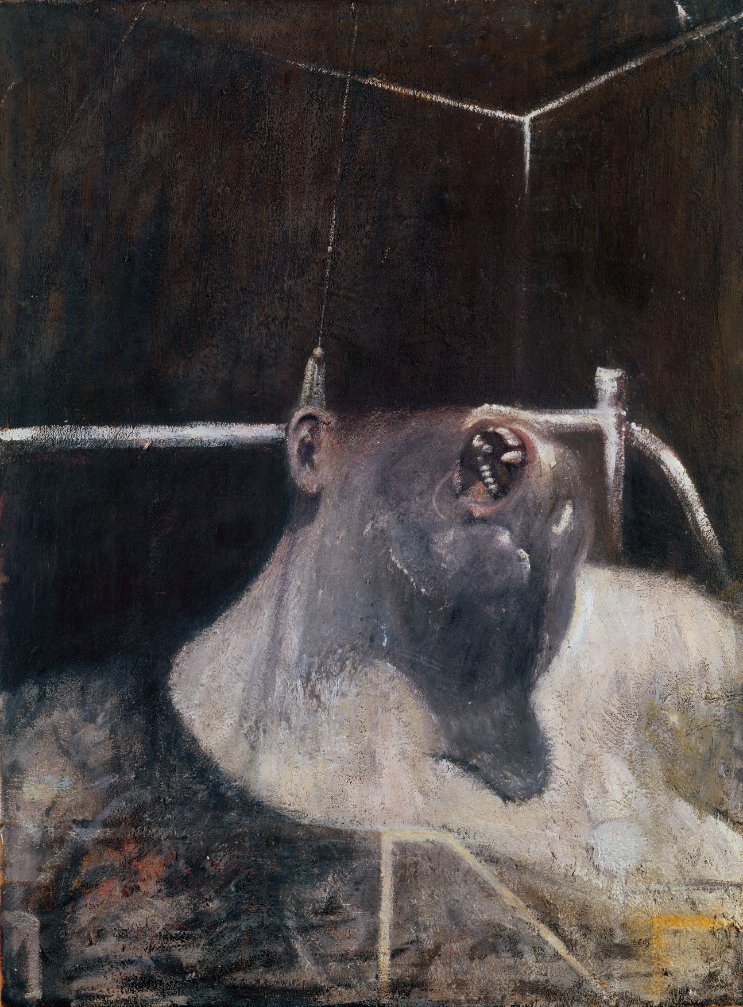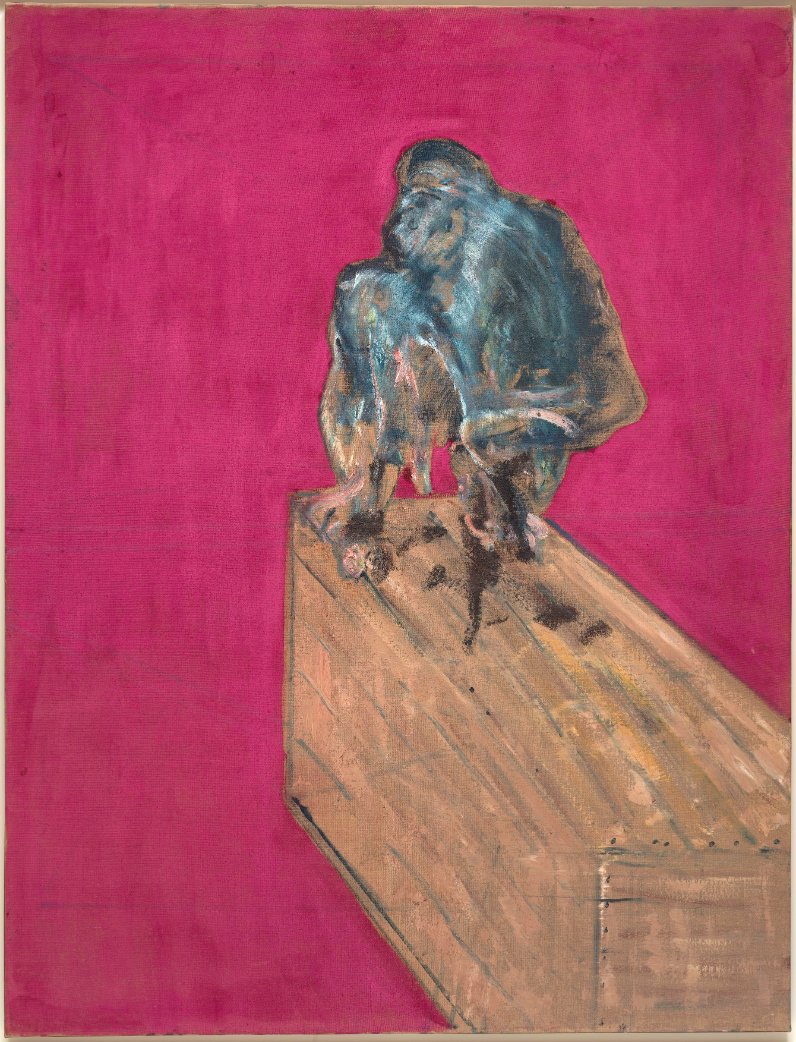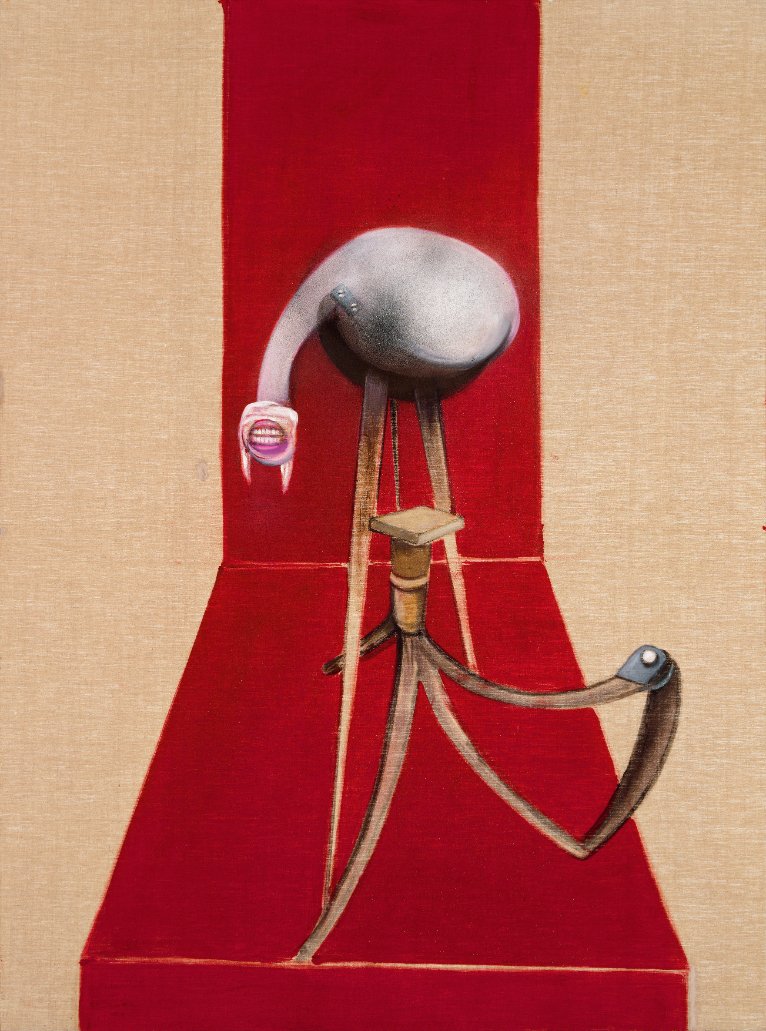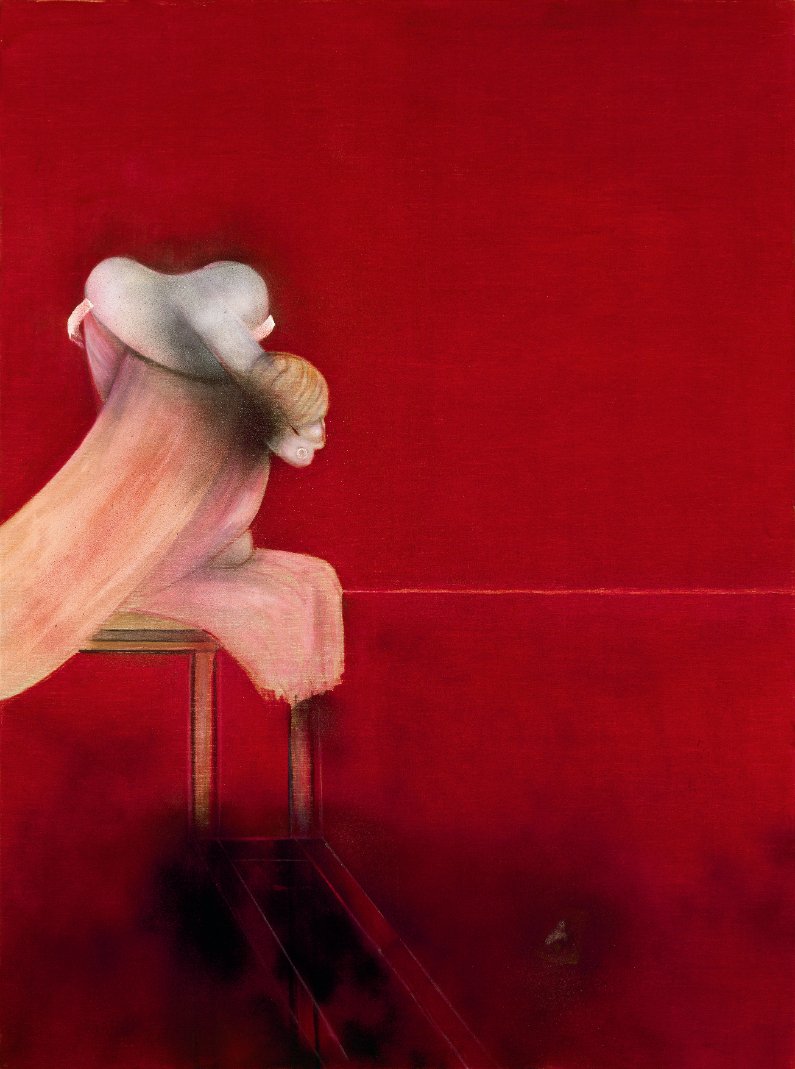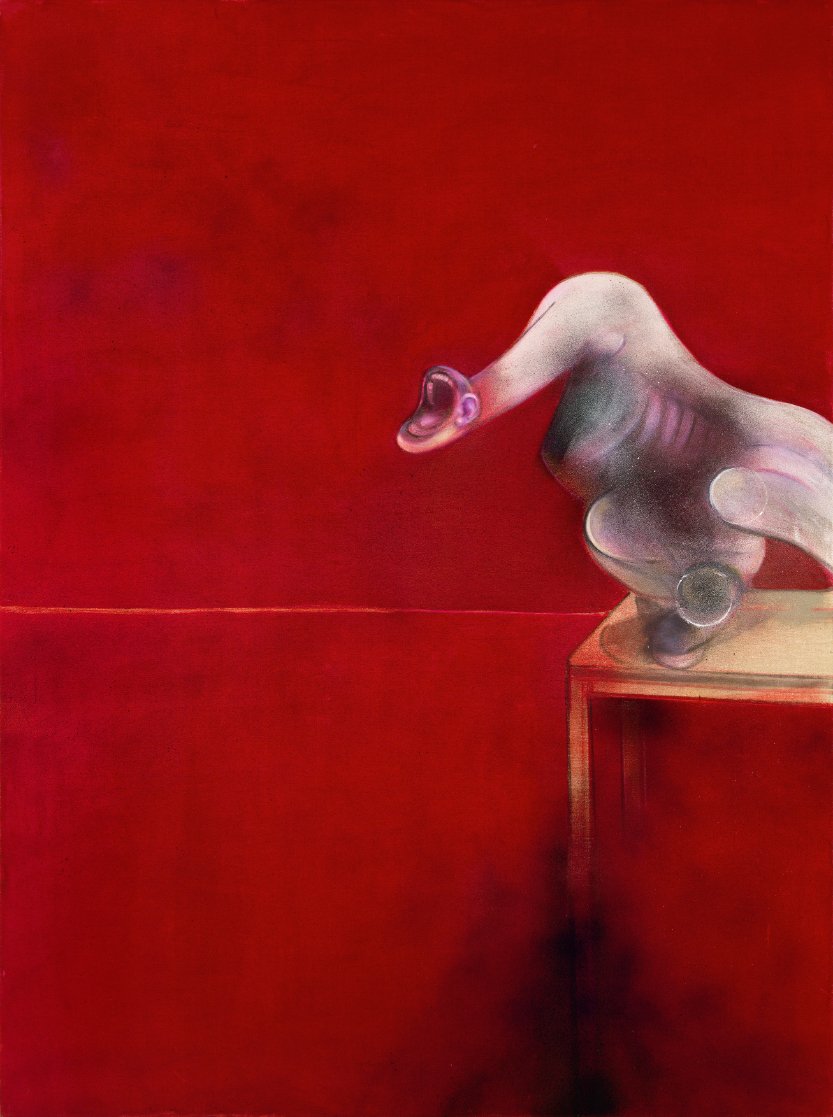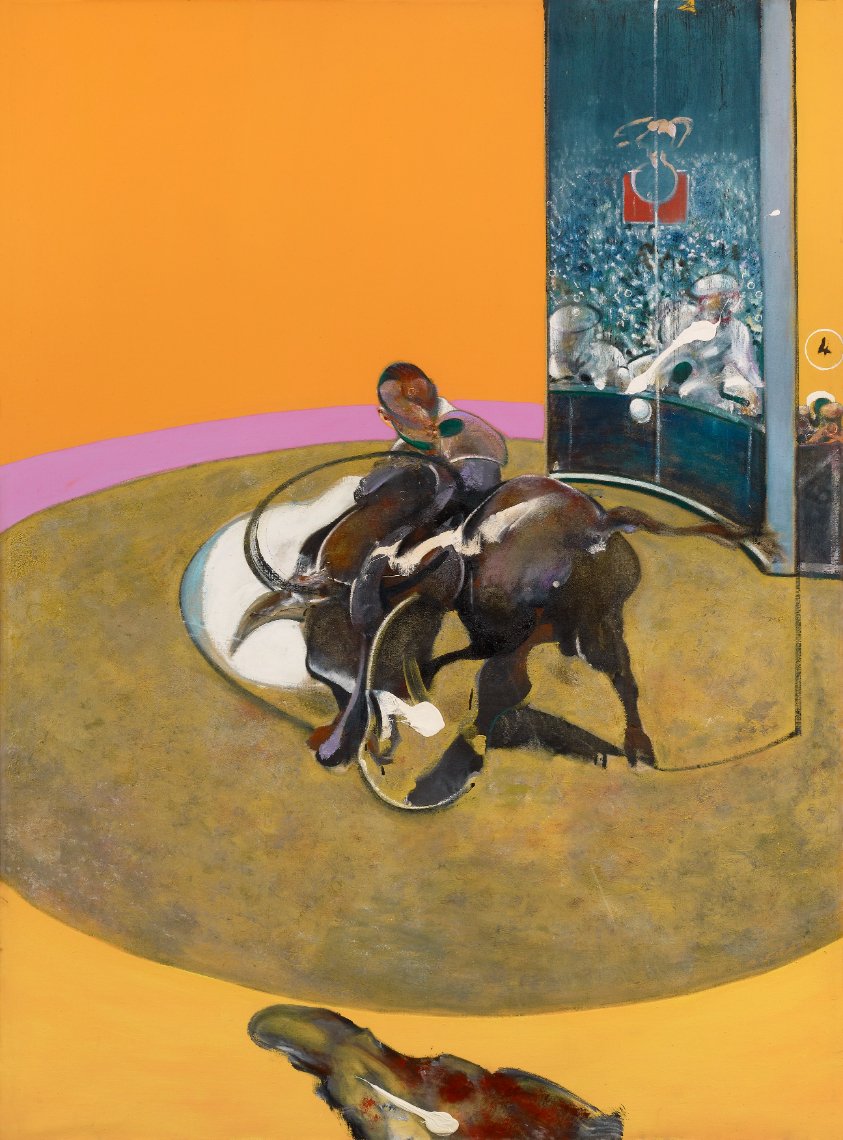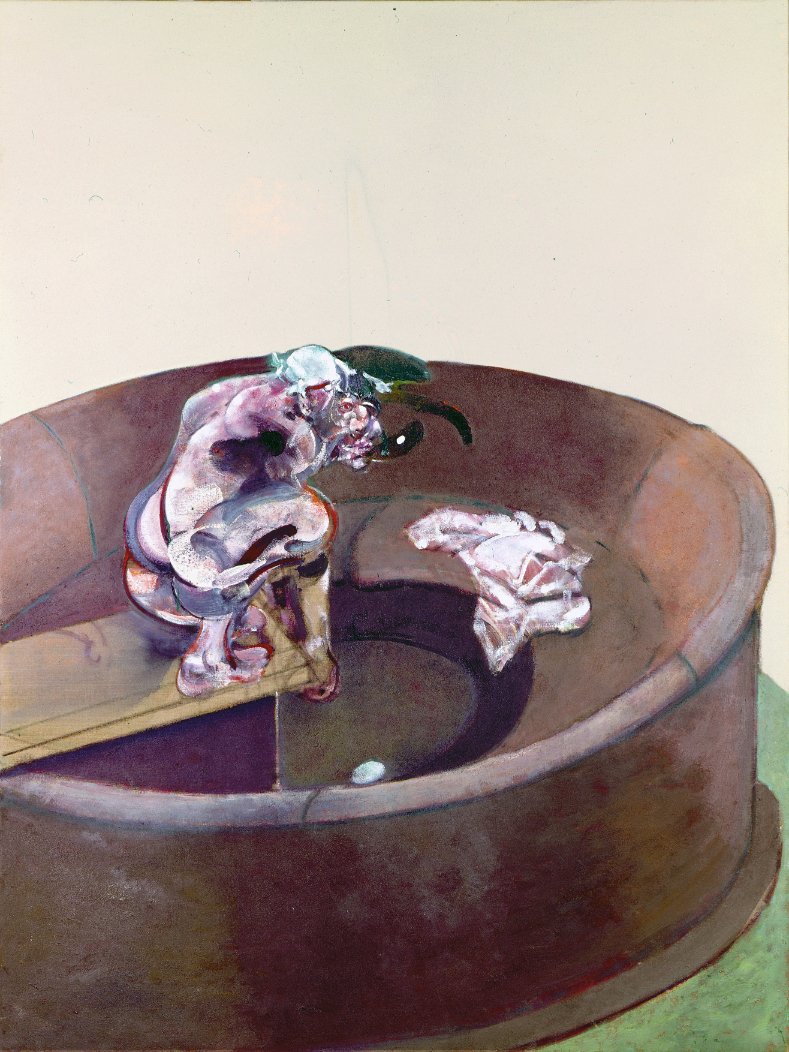Francis Bacon, Head VI, 1949
Oil on canvas, 91.4 x 76.2 cm
Arts Council Collection, Southbank Centre, London
© The Estate of Francis Bacon. All rights reserved, DACS/Artimage 2021. Photo: Prudence Cuming Associates Ltd
The Royal Academy presents Francis Bacon: Man and Beast, an impressive showcase of the Northern Irish artist. It reveals his unquestionable skill and craftsmanship as well as the infinitely dark depths of his imagination.
Banished at sixteen from his Catholic family in 1926 for being openly gay, Bacon left Ireland for Berlin, then Paris until landing in London in 1929 to establish himself as an acclaimed artist. Exempt from military service in 1939 because of his asthma, Bacon spent time in London and Hampshire, surrounding himself with artists that included Lucian Freud.
Walking through Man and Beast makes you ponder the shifting tides of post-war England and how it inspired individuals such as Joe Orton, the Kray Twins, Philip Larkin, and Bacon himself. Similar to Edvard Munch's Scream, Bacon’s work prompts an unsettling effect of synesthesia. Perhaps this is no surprise for an artist who strove to render the “brutality of fact.”
Profound and moving, his figurative works focus on the human form; crucifixions, self-portraits, and portraits of friends. Faces appear as if covered with nylon stockings, or cut away to expose the tendon and bone beneath; figures are reduced to a tiny space on the canvas, suggestive of being tortured in a shell, or shrinking away to nothingness.
Many of these images accompany the show's exploration into his unerring fascination with animals. Be it chimpanzees, bulls, dogs, or birds of prey, Bacon felt he could get closer to understanding the true nature of humankind by watching the uninhibited behavior of animals. We see carnality, appetite and decay, raw expression of anxiety and instinct through his anthropomorphic forms. From his Picasso influenced bio-morphs from the ‘30s, male heads isolated in rooms, or geometric structures in the ‘40s to animals and lone figures in the late ‘50s, Man and Beast highlights his existential approach to painting and why he presented his unique human forms the way that he did. Francis Bacon: Man and Beast is on view through April 17 @ The Royal Academy of Arts. Text by Lara Monro


